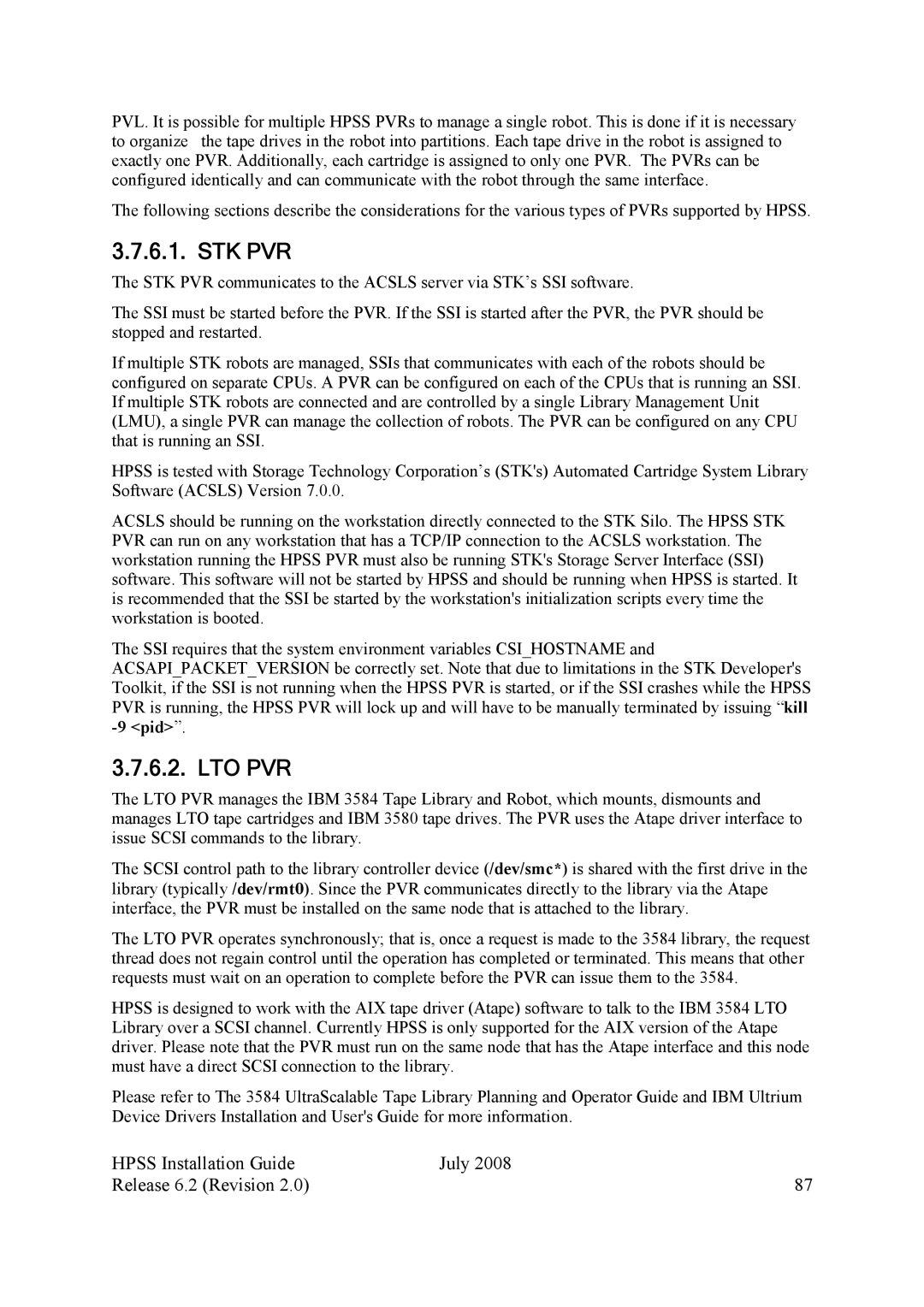PVL. It is possible for multiple HPSS PVRs to manage a single robot. This is done if it is necessary to organize the tape drives in the robot into partitions. Each tape drive in the robot is assigned to exactly one PVR. Additionally, each cartridge is assigned to only one PVR. The PVRs can be configured identically and can communicate with the robot through the same interface.
The following sections describe the considerations for the various types of PVRs supported by HPSS.
3.7.6.1. STK PVR
The STK PVR communicates to the ACSLS server via STK’s SSI software.
The SSI must be started before the PVR. If the SSI is started after the PVR, the PVR should be stopped and restarted.
If multiple STK robots are managed, SSIs that communicates with each of the robots should be configured on separate CPUs. A PVR can be configured on each of the CPUs that is running an SSI. If multiple STK robots are connected and are controlled by a single Library Management Unit (LMU), a single PVR can manage the collection of robots. The PVR can be configured on any CPU that is running an SSI.
HPSS is tested with Storage Technology Corporation’s (STK's) Automated Cartridge System Library Software (ACSLS) Version 7.0.0.
ACSLS should be running on the workstation directly connected to the STK Silo. The HPSS STK PVR can run on any workstation that has a TCP/IP connection to the ACSLS workstation. The workstation running the HPSS PVR must also be running STK's Storage Server Interface (SSI) software. This software will not be started by HPSS and should be running when HPSS is started. It is recommended that the SSI be started by the workstation's initialization scripts every time the workstation is booted.
The SSI requires that the system environment variables CSI_HOSTNAME and
ACSAPI_PACKET_VERSION be correctly set. Note that due to limitations in the STK Developer's Toolkit, if the SSI is not running when the HPSS PVR is started, or if the SSI crashes while the HPSS PVR is running, the HPSS PVR will lock up and will have to be manually terminated by issuing “kill
3.7.6.2. LTO PVR
The LTO PVR manages the IBM 3584 Tape Library and Robot, which mounts, dismounts and manages LTO tape cartridges and IBM 3580 tape drives. The PVR uses the Atape driver interface to issue SCSI commands to the library.
The SCSI control path to the library controller device (/dev/smc*) is shared with the first drive in the library (typically /dev/rmt0). Since the PVR communicates directly to the library via the Atape interface, the PVR must be installed on the same node that is attached to the library.
The LTO PVR operates synchronously; that is, once a request is made to the 3584 library, the request thread does not regain control until the operation has completed or terminated. This means that other requests must wait on an operation to complete before the PVR can issue them to the 3584.
HPSS is designed to work with the AIX tape driver (Atape) software to talk to the IBM 3584 LTO Library over a SCSI channel. Currently HPSS is only supported for the AIX version of the Atape driver. Please note that the PVR must run on the same node that has the Atape interface and this node must have a direct SCSI connection to the library.
Please refer to The 3584 UltraScalable Tape Library Planning and Operator Guide and IBM Ultrium Device Drivers Installation and User's Guide for more information.
HPSS Installation Guide | July 2008 |
Release 6.2 (Revision 2.0) | 87 |
